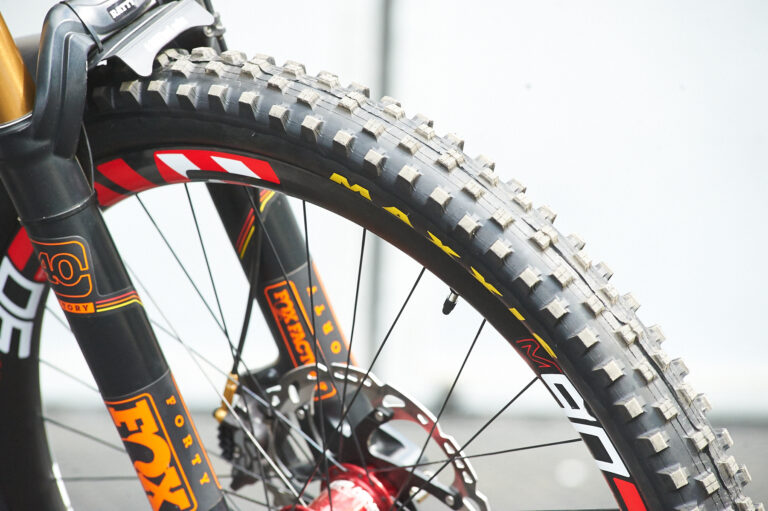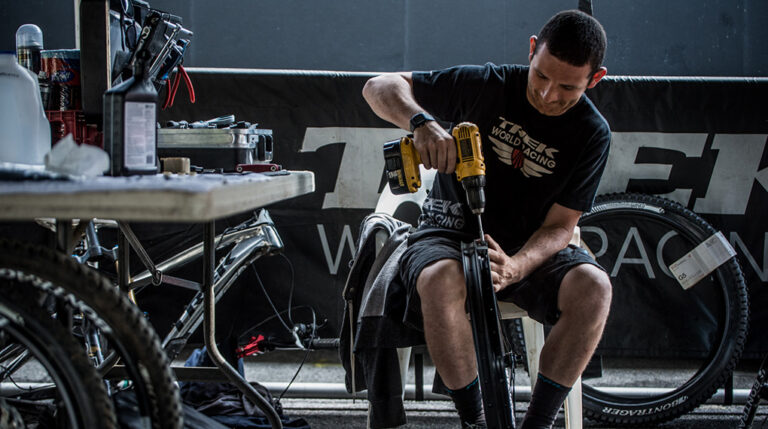
We look at what long travel trail forks can do and which ones we think WORK the best…
Taken from Dirt Issue 63, May 2007
The heyday of the development of telescopic dampers is now almost fifty years behind us. Even before that the first improvements in the evolution of special formulas of the working fluid in these units (fork oil) was invented by Esso technologists back in the 1940’s. That technology was used primarily for motorcycles. It was long time ago. Why then is it only ten years ago that the first serious suspension fork was introduced on to the market to mountainbikers…the Z1 Bomber?
Even for a company like Marzocchi, who have been making suspension since the forties, it took a while to realise that in the 150 years we’ve been riding bicycles off road it’s a while, with a big W. When things did start moving Olivier Bossard, a key man in the success of the Sunn team who had a strong motocross background, saw that some of the early suspension from RockShox “just didn’t work” and by the mid nineties had introduced his own piston design onto the forks of a bicycle. “I saw potentially huge amounts of performance increases that could be made at the time,” says Bossard.
Sunn suspension was almost all his own work. Many companies continued the view that bicycles were completely different to motorcycles, but paradigms aside, absorbing shocks from the track and providing a comfortable ride was, and is, the main function of cycle suspension. There are other reasons naturally. To improve handling for example, because without damping an unsprung bike because of its inertia would prevent the bike from following the terrain, it would spend most of the time in the air.
So yes, although a broad generalisation, there have been moments in the past twenty years in particular when the overwhelming need of mountainbike suspension is to enable us to go quicker, over bumps, off road. Why not? It’s a mountainbike.
Well, not any longer it seems because the need to go rigid or with less travel is as important as travelling with more. We want to lock them out, step them down, slow them up and almost suffocate the very essence of why they were introduced to a bicycle. Suspension companies are almost saying less is better and rigid is a must. Crazy.
It’s an upside down sport because the opposite also applies. Many riders and manufacturers want bikes with little or no travel to go faster downhill. Hardtails with six and a half inches of travel, six inch bikes with four inches of travel up front and six inch forks being bolted to skinny unprepared cross country bikes to give the rider better downhilling experience without for a second considering geometry balls ups. One rider recently told me “I want downhill performance on my cross country bike”. (Visions of a rider fighting to get some weight on front wheel of the newly chopped out bike as his mate with a four inch Specialized Epic with a downhill wheelbase scoots past).
Forks. They’re beautiful items of equipment. Throwing away, or at least forgetting for a moment the crazy bolt ons, modern forks are heavenly gifts for enabling us to go faster. Remove the obsessive adjustment culture with modern suspension and all the associated technology of travel and six-inch bikes, and you’ll find they are ridden by both the fit and angry to maximum effect, and the slow and sedate as means of cushioning.
And it’s a great feeling buying new forks, one of the biggest changes you can make to your bike short of having a re-spray. There are the choices you have to make: brand, features, technology, travel. Long travel trail forks can, unlike the name suggests, be used for blasting it down pretty rough tracks. Ideally they would be bolted on to a similarly sprung and suitably angled bike. With most companies manufacturing to within 20mm on a variety of frame designs there seems little point in using them for anything other than off road terrain from forest loops to real mountain hardware.
In our recent review on mid travel bikes we found that most of the favoured bikes are capable of most things but held back in their ability on the much rougher ground. Very simply it was the fork that was the biggest limiter in the bikes ability to descend. Bigger forks, better downhill. Of course on the other hand most five to six inch bikes with a simple switch of fork and wheelset transforms a bike from heavy bruiser to lightweight dancer. It depends what you ride and how long you ride for.
BACKGROUND
Over the past ten years we have been told year on year by the press and manufacturers of the improvements in fork technology. Since the beautiful Bomber Z1 of 1997 the mechano–evolutionary book should now be piled full of some pretty advanced (and reliable) pieces of equipment. Well, we still have plastic, metal, rubber and oil in the mix for certain, and yes the internals of 100mm up front no longer comprises of the stuff that seal wine bottles plus a little bit of butter, but the reality is still a catalogue of knocking, wobbling and stanchion wear as reliable as the ‘10s’ being dished out in some of the press.
Whilst fork reliability across the ranges does seem to be slowly migrating in the right direction, the story for some of the lesser lights is that they’re pretty much on a one–way trip to nowhere city. And as for price, well when you compare the fact that you can buy a good quality all mountain hardtail with 130mm forks for £799 to the price of many forks, it’s obvious there’s a little bit of piss taking going on somewhere.
CHOICES
Long travel trail forks then. Easy. Pick half a dozen of the best and stick them in with a quick review. Simple…two days later I’m faced with a list of up to a hundred forks with an average travel upwards of five inches. I’ve clearly made a mistake. A very big one.
From the simplicity and remoteness of downhill to this…absolute inner city madness. Yet this surely should be the land of simplicity? Shouldn’t it? Four forks pretty much rule the downhill world. Long travel trail? Take a look at this.
HANDLING AND STEERING – THE ESSENTIALS OF OFF ROAD RIDING
Nearly seventy forks without even bringing in Pace, Magura, Maverick and White Bros. But before you get your cash out consider first your bike. Changes to steering, wheelbase and bottom bracket are just some of the affects of changing fork length. In some cases a well-designed hardtail is going to be quicker than a four-inch bike with six-inch forks. That said it’s quite possible to run a Cannondale Prophet on any of the above forks from a minimum of 130mm and upto160mm to produce two quite different bikes. That inch difference can easily be made up in either sag or tyre sizes each way. It’s also worth remembering of course that the fork is not really the first point of contact on a bike, it’s the tyre. A large volume soft compound tyre will do wonders for the front of a bike shaking at the joints.
On the list RockShox produce the cheapest and lightest 130mm fork, Fox make the most adjustable and most expensive 100mm–160mm. But where for heaven sake do you start with this lot? Technology? Well there never has, or ever will be, any shortage of “amazing stuff coming forward…better than last years” have no fear of that. Travel? There is more up front on most people’s bikes than ever. Service costs? Suspension servicing has become a reasonably sized business.
In fact replacing suspension has become about as common as getting a new pair of shoes; no I’m not saying that the service centres are a bunch of cobblers here, simply the fact that forks are becoming throw away items. Could it also be we’re riding our bikes harder? Maybe World Cup events are a microcosm of what’s happening in fork service centres worldwide? Hardly. At World Cups the Showa man turns up with a handbag, RockShox turn up with a lorry, and Marzocchi…well, they don’t even bother coming.









